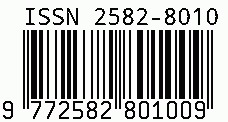
International Journal of Leading Research Publication
E-ISSN: 2582-8010
•
Impact Factor: 9.56
A Widely Indexed Open Access Peer Reviewed Multidisciplinary Monthly Scholarly International Journal
Plagiarism is checked by the leading plagiarism checker
Call for Paper
Volume 6 Issue 12
December 2025
Indexing Partners



















Human Development Index Trend in India (1990 to 2021)
| Author(s) | Kanu Rangpara, Dr. Ghanshyam K. Lakkad |
|---|---|
| Country | India |
| Abstract | The Human Development Index has been released by the United Nations Development Programme ( UNDP ) every year since 1990 in the world . In which the Human Development Index is calculated based on life expectancy , education and per capita income of different countries of the world. In which, all countries are ranked by human development by giving a score between 0 and 1 to different countries of the world . This paper has tried to show the change in the Human Development Index of the country or the trend of human development from 1990 to 2021. In India, the value of the Human Development Index was 0.431 in 1990 , which has increased to 0.633 in 2021. The average life expectancy in India has decreased from 69.7 years to 67.2. The average years of education in India have increased by 6.7 years and the expected years by 11.9 years. India's per capita GNI increased by $2,170 (13.61) during this period. India 's Human Development Index value increased from 0.431 to 0.633 from 1990 to 2021. This represents an increase of 50.0% from 1990 to 2021 . |
| Keywords | Life expectancy,Educational attainment,Educational attainment |
| Field | Arts |
| Published In | Volume 6, Issue 1, January 2025 |
| Published On | 2025-01-10 |
| Cite This | Human Development Index Trend in India (1990 to 2021) - Kanu Rangpara, Dr. Ghanshyam K. Lakkad - IJLRP Volume 6, Issue 1, January 2025. |
Share this


CrossRef DOI is assigned to each research paper published in our journal.
IJLRP DOI prefix is
10.70528/IJLRP
Downloads
All research papers published on this website are licensed under Creative Commons Attribution-ShareAlike 4.0 International License, and all rights belong to their respective authors/researchers.

